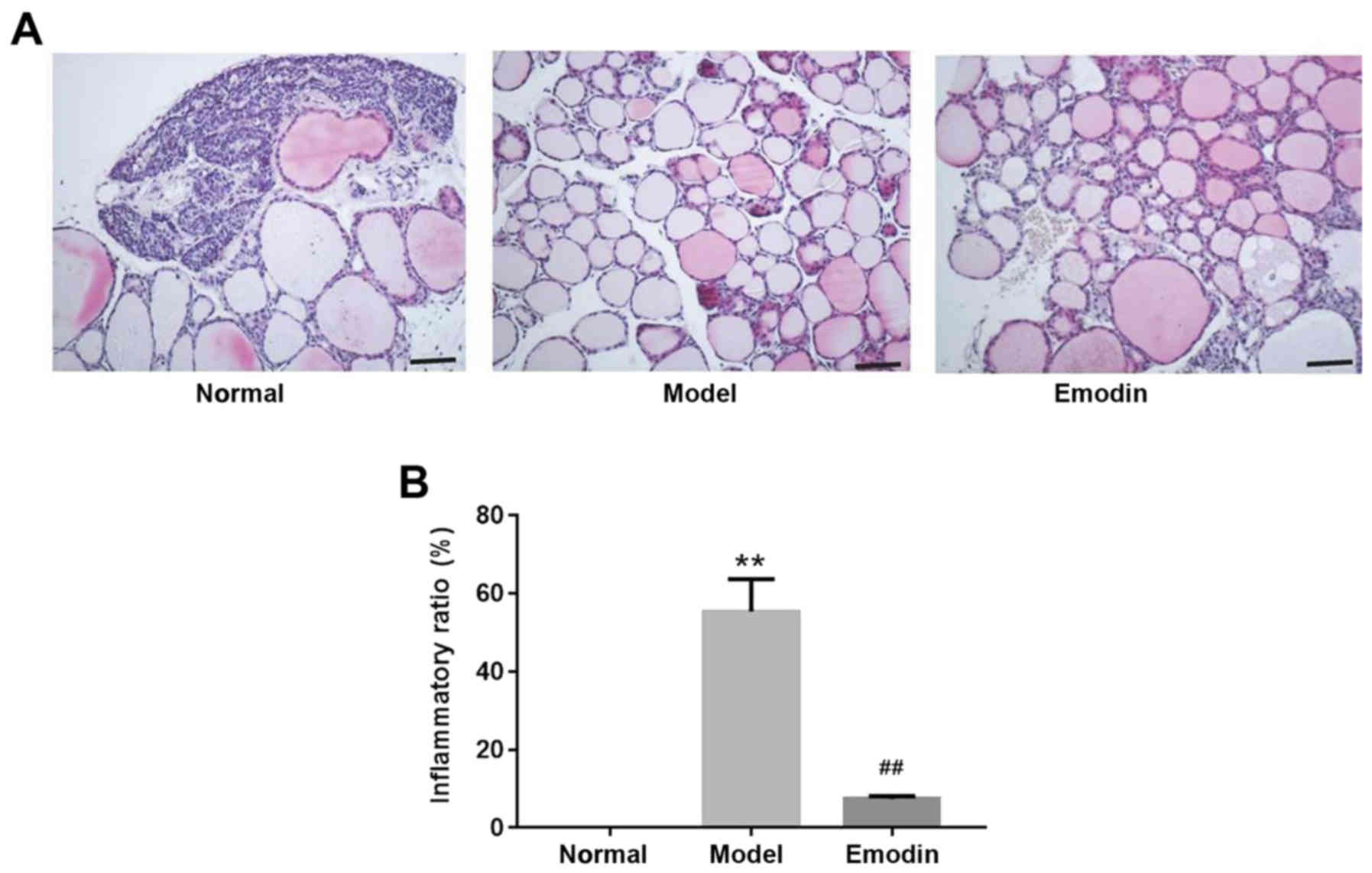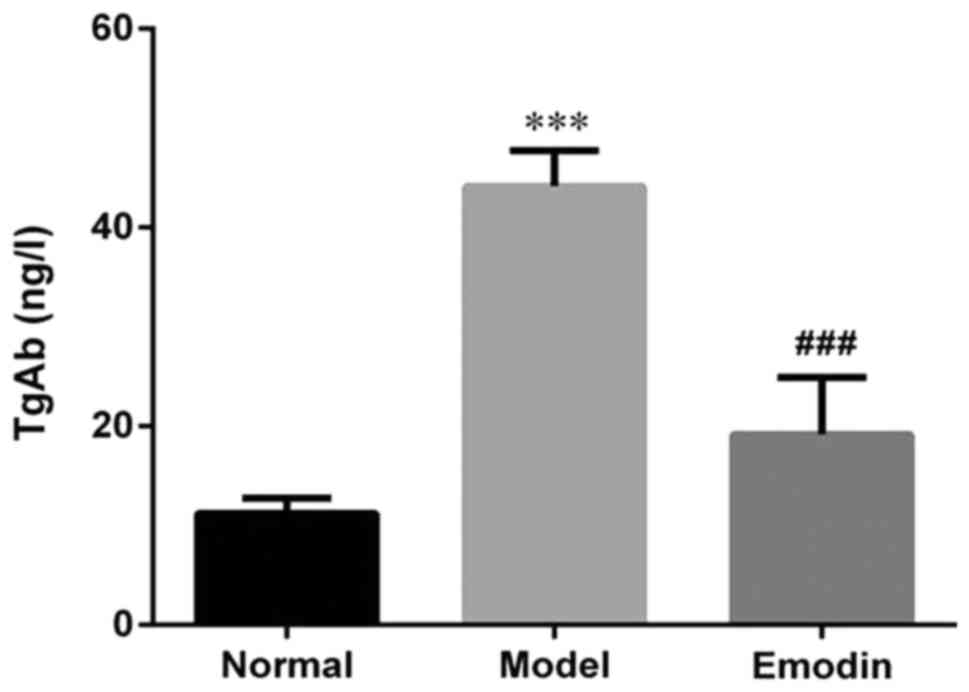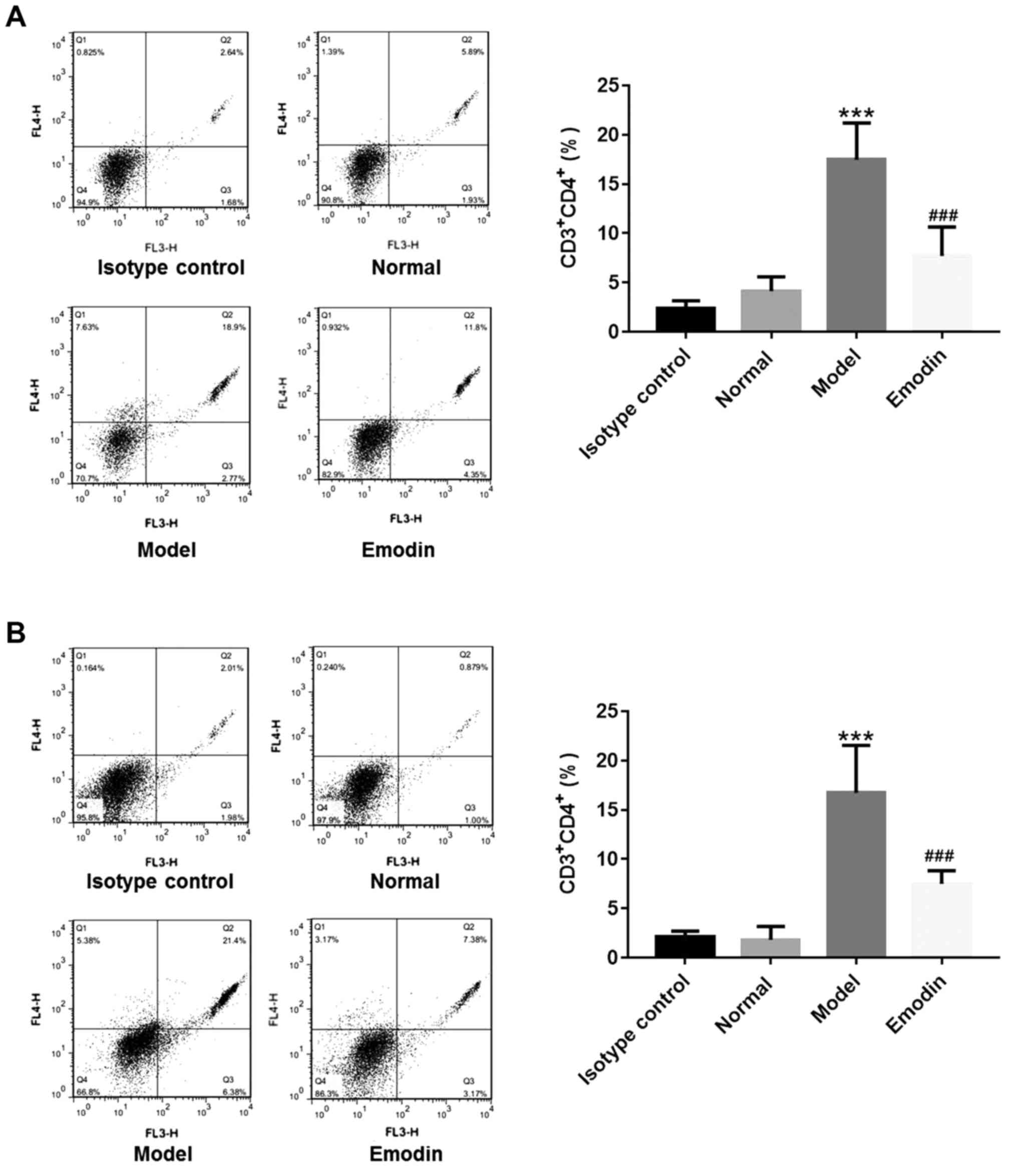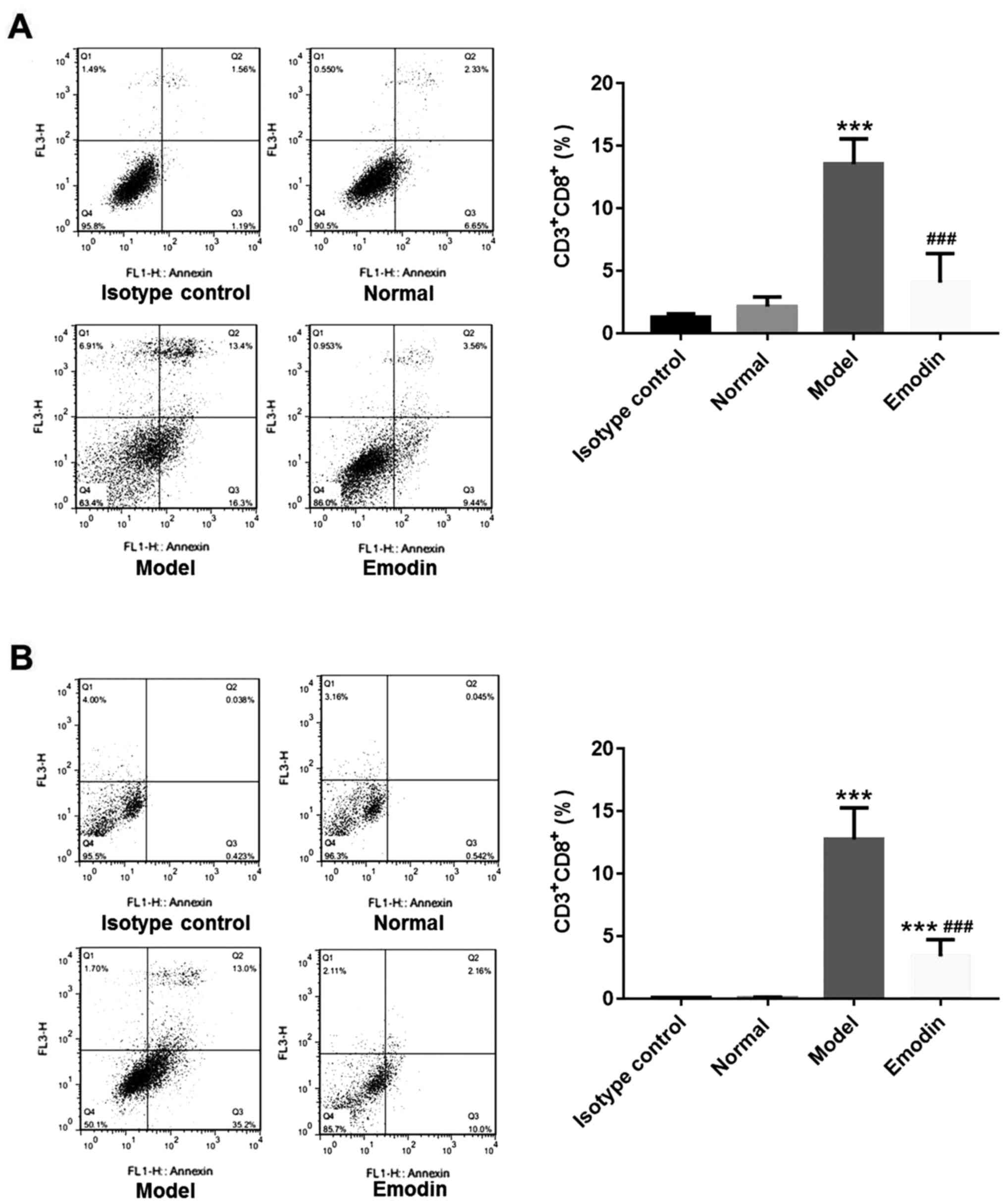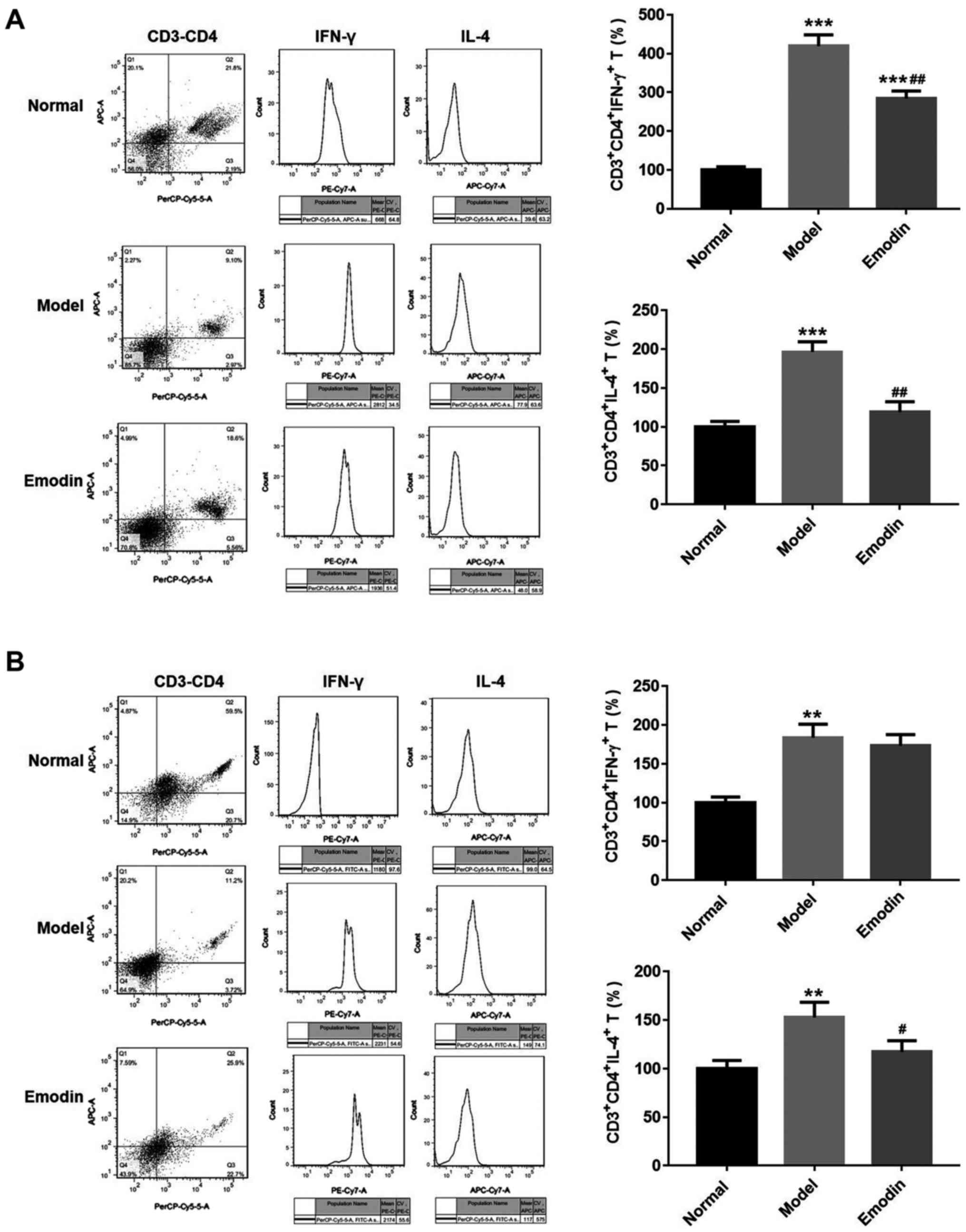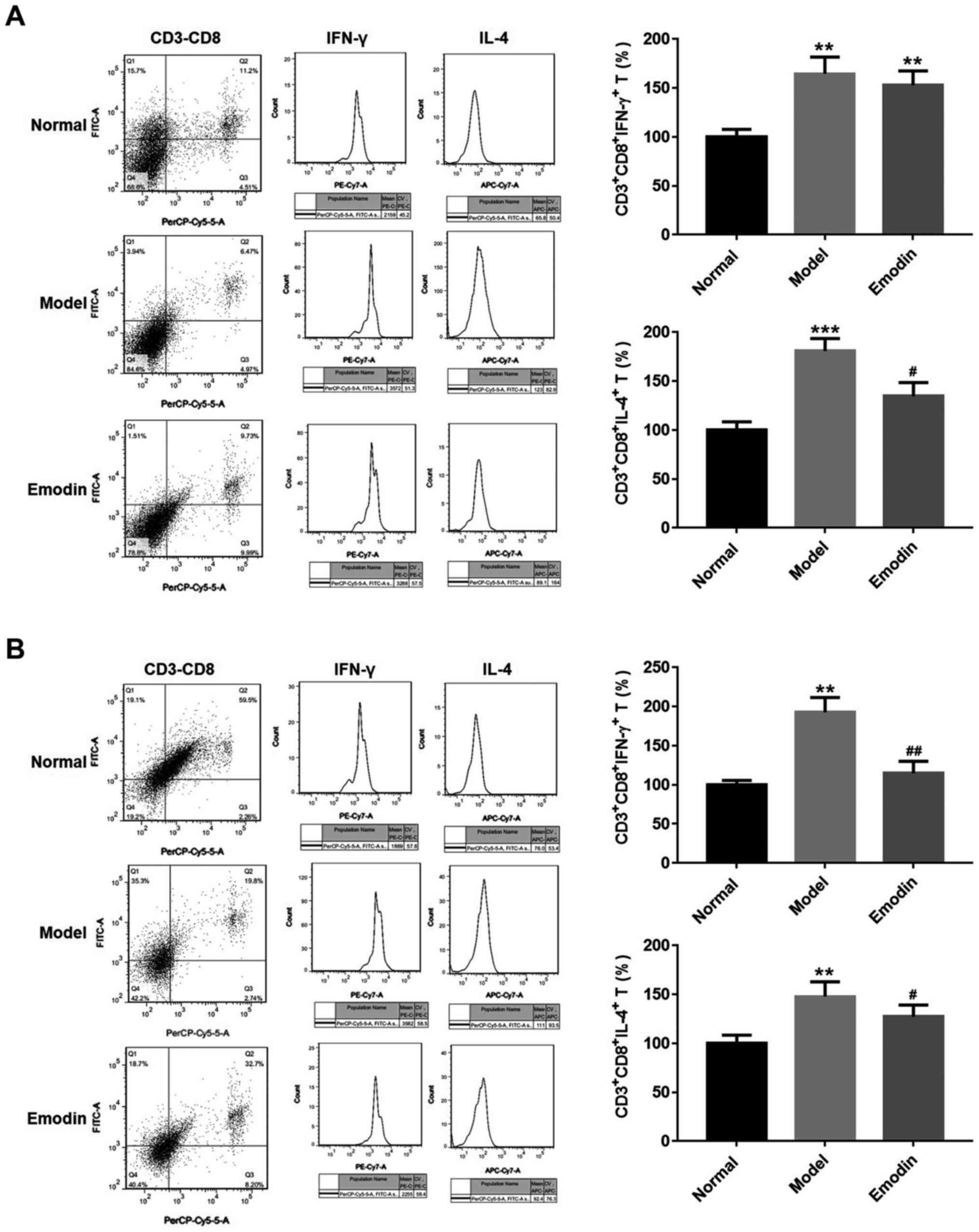|
1
|
Zhang Y, Ma XP, Deng FS, Liu ZR, Wei HQ,
Wang XH and Chen H: The effect of chronic lymphocytic thyroiditis
on patients with thyroid cancer. World J Surg Oncol. 12:2772014.
View Article : Google Scholar : PubMed/NCBI
|
|
2
|
Antonaci A, Consorti F, Mardente S and
Giovannone G: Clinical and biological relationship between chronic
lymphocytic thyroiditis and papillary thyroid carcinoma. Oncol Res.
17:495–503. 2009. View Article : Google Scholar : PubMed/NCBI
|
|
3
|
Iliadou PK, Effraimidis G, Konstantinos M,
Grigorios P, Mitsakis P, Patakiouta F and Pazaitou-Panayiotou K:
Chronic lymphocytic thyroiditis is associated with invasive
characteristics of differentiated thyroid carcinoma in children and
adolescents. Eur J Endocrinol. 174:X12016.PubMed/NCBI
|
|
4
|
Yu L, Zhou L, Xu E, Bi Y, Hu X, Pei X and
Jin G: Levothyroxine monotherapy versus levothyroxine and selenium
combination therapy in chronic lymphocytic thyroiditis. J
Endocrinol Invest. 40:1243–1250. 2017. View Article : Google Scholar : PubMed/NCBI
|
|
5
|
Guimaraes VC, Quintans J, Fisfalen ME,
Straus FH, Wilhelm K, Medeiros-Neto A and Degroot LJ: Suppression
of development of experimental autoimmune thyroiditis by oral
administration of thyroglobulin. Endocrinology. 136:3353–3359.
1995. View Article : Google Scholar : PubMed/NCBI
|
|
6
|
Hoshikawa S, Nakagawa Y, Ozaki H,
Takahashi Y, Ito S, Yoshida K and Mori K: Effects of green tea
polyphenols on iodide-induced autoimmune thyroiditis in nonobese
diabetic mice. Immunol Invest. 42:235–246. 2013. View Article : Google Scholar : PubMed/NCBI
|
|
7
|
Morris GP, Brown NK and Kong YC:
Naturally-existing CD4(+)CD25(+)Foxp3(+) regulatory T cells are
required for tolerance to experimental autoimmune thyroiditis
induced by either exogenous or endogenous autoantigen. J Autoimmun.
33:68–76. 2009. View Article : Google Scholar : PubMed/NCBI
|
|
8
|
Song XH, Zan RZ, Yu CH and Wang F: Effects
of modified Haizao Yuhu Decoction in experimental autoimmune
thyroiditis rats. J Ethnopharmacol. 135:321–324. 2011. View Article : Google Scholar : PubMed/NCBI
|
|
9
|
Yu X, Li L, Li Q, Zang X and Liu Z: TRAIL
and DR5 promote thyroid follicular cell apoptosis in iodine
excess-induced experimental autoimmune thyroiditis in NOD mice.
Biol Trace Elem Res. 143:1064–1076. 2011. View Article : Google Scholar : PubMed/NCBI
|
|
10
|
Dong X, Fu J, Yin X, Cao S, Li X, Lin L
and Ni J: Emodin: A review of its pharmacology, toxicity and
pharmacokinetics. Phytother Res. 30:1207–1218. 2016. View Article : Google Scholar : PubMed/NCBI
|
|
11
|
Trybus W, Król T, Trybus E,
Kopacz-Bednarska A, Król G and Karpowicz E: Changes in the
lysosomal system of cervical cancer cells induced by emodin action.
Anticancer Res. 37:6087–6096. 2017.PubMed/NCBI
|
|
12
|
Dai JP, Wang QW, Su Y, Gu LM, Zhao Y, Chen
XX, Chen C, Li WZ, Wang GF and Li KS: Emodin inhibition of
influenza A virus replication and influenza viral pneumonia via the
Nrf2, TLR4, p38/JNK and NF-kappaB pathways. Molecules. 22(pii):
E17542017. View Article : Google Scholar : PubMed/NCBI
|
|
13
|
Yan L, Hu R, Tu S, Cheng WJ, Zheng Q, Wang
JW, Kan WS and Ren YJ: Emodin mitigates the oxidative stress
induced by cisplatin in osteosarcoma MG63 cells. Oncol Lett.
12:1981–1985. 2016. View Article : Google Scholar : PubMed/NCBI
|
|
14
|
Zu C, Zhang M, Xue H, Cai X, Zhao L, He A,
Qin G, Yang C and Zheng X: Emodin induces apoptosis of human breast
cancer cells by modulating the expression of apoptosis-related
genes. Oncol Lett. 10:2919–2924. 2015. View Article : Google Scholar : PubMed/NCBI
|
|
15
|
Qiu F, Liu H, Liang CL, Nie GD and Dai Z:
A new immunosuppressive molecule emodin induces both CD4+FoxP3+ and
CD8+CD122+ regulatory T cells and suppresses murine allograft
rejection. Front Immunol. 8:15192017. View Article : Google Scholar : PubMed/NCBI
|
|
16
|
Guzman RE and Radi ZA: Chronic lymphocytic
thyroiditis in a cynomolgus macaque (Macaca fascicularis). Toxicol
Pathol. 35:296–299. 2007. View Article : Google Scholar : PubMed/NCBI
|
|
17
|
Tang H, Mignon-Godefroy K, Meroni PL,
Garotta G, Charreire J and Nicoletti F: The effects of a monoclonal
antibody to interferon-gamma on experimental autoimmune thyroiditis
(EAT): Prevention of disease and decrease of EAT-specific T cells.
Eur J immunol. 23:275–278. 1993. View Article : Google Scholar : PubMed/NCBI
|
|
18
|
Wang X, Liu H, Zhang Y, Li J, Teng X, Liu
A, Yu X, Shan Z and Teng W: Effects of isolated positive maternal
thyroglobulin antibodies on brain development of offspring in an
experimental autoimmune thyroiditis model. Thyroid. 25:551–558.
2015. View Article : Google Scholar : PubMed/NCBI
|
|
19
|
Shoenfeld Y, Zandman-Goddard G,
Stojanovich L, Cutolo M, Amital H, Levy Y, Abu-Shakra M, Barzilai
O, Berkun Y, Blank M, et al: The mosaic of autoimmunity: hormonal
and environmental factors involved in autoimmune diseases-2008. Isr
Med Assoc J. 10:8–12. 2008.PubMed/NCBI
|
|
20
|
Jacobson EM, Huber A and Tomer Y: The HLA
gene complex in thyroid autoimmunity: from epidemiology to
etiology. J Autoimmun. 30:58–62. 2008. View Article : Google Scholar : PubMed/NCBI
|
|
21
|
Watanabe M, Yamamoto N, Maruoka H, Tamai
H, Matsuzuka F, Miyauchi A and Lwatani Y: Independent involvement
of CD8+ CD25+ cells and thyroid autoantibodies in disease severity
of Hashimoto's disease. Thyroid. 12:801–808. 2002. View Article : Google Scholar : PubMed/NCBI
|
|
22
|
Vasu C, Dogan RN, Holterman MJ and
Prabhakar BS: Selective induction of dendritic cells using
granulocyte macrophage-colony stimulating factor, but not fms-like
tyrosine kinase receptor 3-ligand, activates thyroglobulin-specific
CD4+/CD25+ T cells and suppresses experimental autoimmune
thyroiditis. J immunol. 170:5511–5522. 2003. View Article : Google Scholar : PubMed/NCBI
|
|
23
|
Liu T, Yu ZQ, Zou HJ, Liu SS, Fan CL, Teng
WP, Shan ZY and Li YS: Study of microRNA-155 changes in
iodine-induced autoimmune thyroiditis model of NOD. H-2 h4 mice.
Chin J Immunol. 31:936–941. 2015.(In Chinese).
|
|
24
|
Yu S, Sharp GC and Braley-Mullen H: Dual
roles for IFN-gamma, but not for IL-4, in spontaneous autoimmune
thyroiditis in NOD.H-2h4 mice. J immunol. 169:3999–4007. 2002.
View Article : Google Scholar : PubMed/NCBI
|



